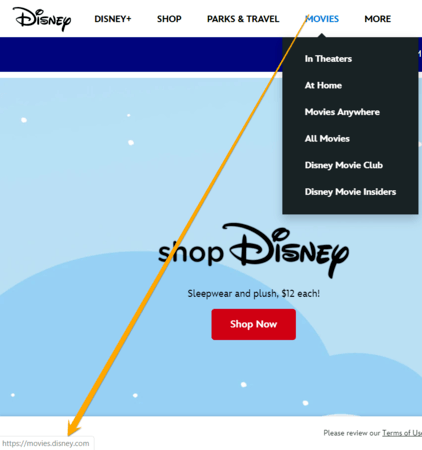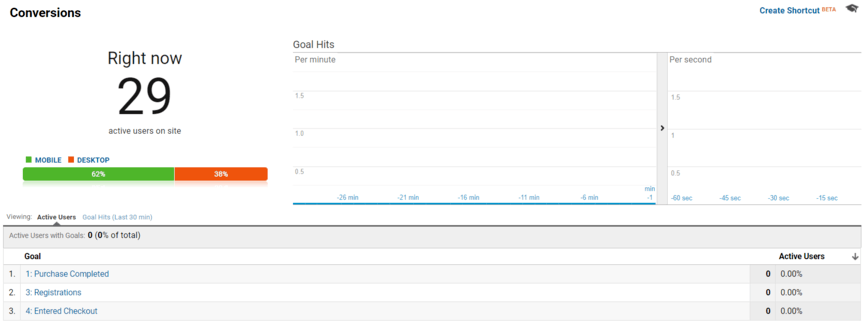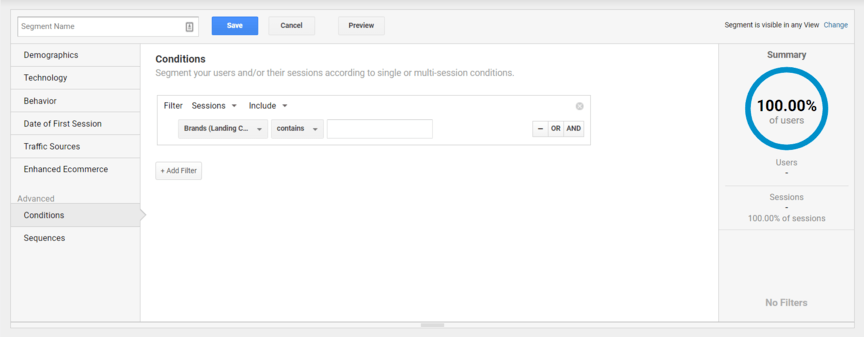-
 13 min. read
13 min. read
-
 Sarah Berry
Sarah Berry Web Marketing Consultant
Web Marketing Consultant
- Sarah Berry is a Google Analytics-certified Web Marketing Consultant at WebFX. She’s written over 400 articles on digital marketing, covering topics like SEO, CRO, and Amazon. When she isn’t polishing her Time Magazine Person of the Year Award, she’s spending time with her flock of ducks.
The short answer? You should redirect your blog to your main site for search engine optimization (SEO).
Google sides with no one in the subdomain vs. subdirectory SEO debate. Instead, they recommend that you choose the option that works best for your business and its long-term strategy. However, many SEO professionals have found that subdomains and SEO don’t work well together.
That’s why, unless you’re a corporation with unique sub-brands like Disney, you should host your blog as a subdirectory vs. subdomain of your site. This approach will give you the best SEO benefits, as well as help your target audience navigate your website and move from awareness to purchase. Keep reading to learn more about the SEO subdomain vs. subdirectory debate, plus what to expect when redirecting a blog from a subdomain to a subdirectory. For more SEO help, enter your URL here to receive personalized recommendations based on your website!
A brief introduction to subdomains vs. subdirectories
If you already know the difference between subdomains and subdirectories, skip ahead! For those new to subdomains and subdirectories, this section provides a quick overview.
What is a subdomain?
A subdomain (blog.example.com) is an add-on to your domain name (example.com). Generally, companies use subdomains to stage or test new website designs, tools, or features, as well as to host an online store.
What is a subdirectory?
A subdirectory (example.com/blog/) is a subfolder on your domain name (example.com).
Businesses use subfolders to organize site content, like by placing product pages within a subdirectory called products (example.com/products/).
Subdomains vs. subdirectories for SEO
Subdirectories and subdirectories both have value, but which one is better for SEO? Check out the table below for a quick summary of subdomains vs. subdirectories for SEO:
| Subdomains vs. Subdirectories | Pros | Cons |
|---|---|---|
| Subdomains for SEO | Helps manage multiple brands under one domain name Supports an international SEO strategy | Requires a unique backlink strategy Creates additional work Undermines SEO efforts |
| Subdirectories for SEO | Focuses link building efforts on a single domain Improves ability to rank in search results Provides easier tracking in Google Analytics | Becomes overwhelming for companies with multiple brands |
Subdomains and SEO
When it comes to subdomains and SEO, subdomains are rarely the right choice. Keep reading to learn why!
Advantages of subdomains for SEO
The two benefits of using subdomains for SEO include:
- Helps manage multiple brands under one domain name
Summary: Corporations behind multiple brands can benefit from using subdomains for SEO to organize their holdings. Most companies, however, own a single brand. That’s why the average business won’t benefit from using a subdomain to host their blog.
Global corporations like Disney benefit from using subdomains for SEO.
That’s because Disney owns a range of unique, standalone brands. Besides its amusement parks, television channels, and movies, Disney is also behind a cruise line, record label, and venture company. Housing all those brands under the disney.com domain name would be overwhelming.
That’s why Disney uses subdomains — and even entirely separate domains, like for its record label.  Subdomains for SEO make sense in this example because of Disney’s diverse brands. It makes sense when you think about the user intent behind these brands too.
Subdomains for SEO make sense in this example because of Disney’s diverse brands. It makes sense when you think about the user intent behind these brands too.
Someone researching a trip to Walt Disney World, for example, is in a different mindset than someone looking up the latest release on Disney+.  Of course, most businesses aren’t Disney. That’s why SMBs rarely need subdomains.
Of course, most businesses aren’t Disney. That’s why SMBs rarely need subdomains.
Even if you offer multiple services, like residential landscaping and commercial landscaping, those services fall under your main brand, company, and purpose: Professional landscaping.
- Supports an international SEO strategy
Summary: Subdomains often help international SEO because they operate as separate sites, which makes sense for international SEO because you’re building a new online presence in a new area. The problem, however, is this benefit doesn’t support hosting your main blog on your subdomain for SEO.
With international SEO, you’re often optimizing your SEO content for the location and language of a specific area. For example, if you’re expanding into France, you may translate existing blog posts to French and add the hreflang tag to tell Google your content is in French and is for users in France.
 You’d also probably create the following subdomain: fr.example.com. A separate subdomain works well in this case because you’re establishing an online presence in a new area. That means this subdomain will likely work to attract links from relevant sites in that area or language, like France or French.
You’d also probably create the following subdomain: fr.example.com. A separate subdomain works well in this case because you’re establishing an online presence in a new area. That means this subdomain will likely work to attract links from relevant sites in that area or language, like France or French.
For most businesses, especially small-to-midsized businesses (SMBs), international SEO isn’t a focus. Even if you do serve global markets, it won’t make sense for your main site’s blog to live on a subdomain. That’s because hosting your main website’s blog on a subdomain comes with a few disadvantages.
Disadvantages of subdomains for SEO
Summary: Google views subdomains as independent from your main website.
Since Google sees your subdomain and main site separately, you have to attract backlinks to both websites. Host your blog on a subdomain, and you’ll create more work for yourself without getting any additional benefits.
The drawback of using subdomains for SEO? You have a lot more work — and for no reason.
Generally, a subdomain acts as a separate site. Think about Disney’s subdomains, for example. Its Walt Disney World website focuses 100% on visiting Walt Disney World, versus Disney merchandise or streaming services.
This approach works well for Disney because these subdomains can attract appropriate and relevant links.  If a blogger wants to highlight Walt Disney World, for instance, they’ll link to the Walt Disney World site. Links like these make Google’s work easier.
If a blogger wants to highlight Walt Disney World, for instance, they’ll link to the Walt Disney World site. Links like these make Google’s work easier.
Google can tell when someone’s talking about Disney+ versus Walt Disney World. As a result, Google can more accurately rank the Walt Disney World subdomain in search results.  It’s important to note, though, that Google looks at the links to the Walt Disney World site as separate from any links to the Disney+ website.
It’s important to note, though, that Google looks at the links to the Walt Disney World site as separate from any links to the Disney+ website.
That means subdomains have independent backlink profiles, which means if you have a blog on a subdomain, you’ll need to have a separate backlink strategy for it. Instead of focusing on attracting links to your domain, you’re having to focus on building links to your domain, plus your subdomain. Since blogs generally power a company’s backlink strategy, having a blog on a subdomain doesn’t make sense for SEO.
You’re essentially creating extra work for yourself for no good reason. Why work to build links to your blog, in addition to your main site? There isn’t a benefit to the strategy as an SMB.
Having your blog on a subdomain is only creating more work for you while undercutting your SEO efforts.
Do subdomains hurt SEO?
When talking about where to host your blog, yes, subdomains hurt SEO. Placing your blog on a subdomain creates more work for your business and undermines your SEO strategy. Instead of optimizing a single site, you’ll have the task of optimizing two sites.
That includes building each website’s backlink profile, which is already one of the most challenging parts of SEO. Help yourself and your SEO by creating (or moving) your blog on your main site.
Subdirectories and SEO
When it comes to subdirectories and SEO, subdirectories often make the most sense. Keep reading to learn why!
Advantages of subdirectories for SEO
The benefits of using subdirectories for SEO include:
- Focuses link building efforts on a single domain
Summary: Subdirectories allow your business to focus its time, energy, and resources on a single link building strategy. You don’t have to attract links to your main website, plus your subdomains. Instead, you focus all your efforts (and reap all the benefits) by keeping all your content on your main domain.
When you build and expand your website with subdirectories vs. subdomains, you can create a single strategy for attracting links to your site. This approach not only saves you time but also maximizes the impact of SEO on your company. Plus, all the content that you publish on your site, whether a new blog post or a new product page, benefits from the strength of your backlink profile.
This perk can lead to another benefit: Helping your content rank faster and higher in search results.
- Improves the ability to rank in search results
Summary: You use SEO because you want the benefits that come with ranking at the top of search results. Subdirectories (vs. subdomains) offer the best option for getting those benefits since they focus your SEO efforts on a single site, allowing you to improve your rankings faster.
Building an online reputation with search engines takes time. Search engines want to make sure they can trust your website and trust your content. Since backlinks serve as a “thumbs up” or vote of confidence for a piece of content, search engines focus on the backlink profiles of sites.
Once you build an authoritative and trustworthy backlink profile, though, your website can get even more value from SEO. Your content, for example, may rank faster in search results because Google knows you deliver. Even better, your content will likely rank higher because of your reputation.
Focusing your SEO strategy on subdirectories vs. subdomains helps you maximize the benefits of an authoritative and trustworthy backlink profile. That’s because, again, you have a single backlink profile. You’re dedicating your resources to a single site instead of trying to manage your site, plus a subdomain.
- Provides easier tracking in Google Analytics
Summary: Hosting your blog on your main website makes tracking your site’s performance in Google Analytics easier. You can see page views, bounce rates, conversion rates, and more from a single website, which saves you time and makes evaluating your online performance headache-free.
Google Analytics is a useful and powerful tool for tracking, measuring, and evaluating your website’s online performance. When you use subdirectories for SEO instead of subdomains, you make it easier to track your site’s performance.
 Generally, with subdomains, you have to set up each subdomain separately. When you think about brands like Disney and its subdomains, this feature makes sense. Disney probably wants to look at the performance of its Walt Disney World site and Disney+ site separately because the two brands and websites operate independently.
Generally, with subdomains, you have to set up each subdomain separately. When you think about brands like Disney and its subdomains, this feature makes sense. Disney probably wants to look at the performance of its Walt Disney World site and Disney+ site separately because the two brands and websites operate independently.
However, if you use a subdomain to host your blog, this approach doesn’t make sense. Your blog operates to support your company and its brand. If you look at your website’s overall performance, you’re going to look at your blog’s performance too.
When you have your blog on a subdomain, though, this process becomes time-consuming because you’re viewing and coordinating data from two separates sites. When you host your blog on your main website, you fix this issue immediately. You can sign in to Google Analytics and check the performance of your entire site, including your blog.
This streamlined reporting can also make it easier to evaluate the journey of your customers. You can see how they moved from a blog post to a service page, for example, and use that data to inspire future posts.
Disadvantages of subdirectories for SEO
Summary: Trying to use subdirectories in place of subdomains is when they often cause problems. A global corporation relying on subdirectories for its various brands will likely run into problems later, as well as waste a significant amount of time evaluating the online performance of each brand.
The only drawback of using subdirectories for SEO is for global companies with multiple brands.
Disney, for example, would experience a few issues with using subdirectories for SEO. When evaluating Google Analytics data, for instance, Disney would have to spend an unnecessary amount of time creating views and segments to measure individual brand performance. The website would also share its backlink profile with all these sub-brands, which could weaken the profile overall.
 That’s because Google would receive a range of signals about the website’s purpose and focus. In comparison, with subdirectories, Google has a better idea of each subdomain’s focus, which can improve the overall strength of each subdirectory’s backlink profile. Essentially, when businesses misuse subdirectories for SEO, they become a disadvantage.
That’s because Google would receive a range of signals about the website’s purpose and focus. In comparison, with subdirectories, Google has a better idea of each subdomain’s focus, which can improve the overall strength of each subdirectory’s backlink profile. Essentially, when businesses misuse subdirectories for SEO, they become a disadvantage.
Do subdirectories hurt SEO?
When global brands use subdirectories vs. subdomains for SEO, it can hurt the SEO strategy of these companies. Overall, though, subdirectories do not hurt SEO. They’re helpful because they organize your site’s content, unify your link building strategy, and support your overall SEO strategy.
How to move your blog from your subdomain to your main site
Asking, “Should I keep my blog on a subdomain or redirect it to my main site?” is a great question.
Unless you’re a business with distinct, independently-operated brands, you should redirect your blog to your main website. This move will benefit your SEO strategy and its long-term success, even though your blog may see a decrease in traffic initially. If you’re ready to move your blog from your subdomain and to your main site, you’ll want to:
- Find your company’s developer
- Have your developer backup your subdomain
- Get your developer to set up a 301 redirect for your blog and its posts to the new domain
These steps are critical, so if your website developer isn’t familiar with SEO, you may want to consider partnering with an SEO agency for the task. An SEO agency, like WebFX, can ensure a safe redirect from your subdomain to your site.
Looking to get better results from your blog and SEO?
Moving your blog from your subdomain to your main website is an excellent first step to getting better results from your blog SEO. If you’re looking to improve the performance of your SEO strategy, though, or move your blog to your site, WebFX can help.
With our in-house team of SEO specialists and web developers, we can help your business redirect its blog safely, as well as optimize your website to improve your rankings in search results and the number of leads and sales you generate from search. Contact us online or call us at 888-601-5359 today to learn more about our SEO services!
-
 Sarah Berry is a Google Analytics-certified Web Marketing Consultant at WebFX. She’s written over 400 articles on digital marketing, covering topics like SEO, CRO, and Amazon. When she isn’t polishing her Time Magazine Person of the Year Award, she’s spending time with her flock of ducks.
Sarah Berry is a Google Analytics-certified Web Marketing Consultant at WebFX. She’s written over 400 articles on digital marketing, covering topics like SEO, CRO, and Amazon. When she isn’t polishing her Time Magazine Person of the Year Award, she’s spending time with her flock of ducks. -

WebFX is a full-service marketing agency with 1,100+ client reviews and a 4.9-star rating on Clutch! Find out how our expert team and revenue-accelerating tech can drive results for you! Learn more
Try our free SEO Checker
Boost your site’s search performance with our free SEO Checker. Analyze your website for optimization tips on titles, headers, content, speed, and more. Get a free report now to enhance rankings on Google, Bing, Yahoo, and beyond!



How Is Your Website’s SEO?
Use our free tool to get your score calculated in under 60 seconds.
Try our free SEO Checker
Boost your site’s search performance with our free SEO Checker. Analyze your website for optimization tips on titles, headers, content, speed, and more. Get a free report now to enhance rankings on Google, Bing, Yahoo, and beyond!






